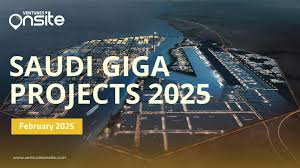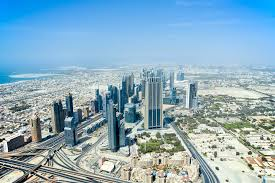Now Reading: 7 Vital Tax Implications in Giga-Project Portfolios in 2025
-
01
7 Vital Tax Implications in Giga-Project Portfolios in 2025
7 Vital Tax Implications in Giga-Project Portfolios in 2025

Table of Contents
The GCC real estate market, valued at USD 38.77 billion in 2024, is projected to hit USD 82.14 billion by 2033, per IMARC Group. Giga-projects like Saudi Arabia’s NEOM ($500 billion), UAE’s Dubai South ($35 billion), and Qatar’s Lusail City ($45 billion) drive 8.2% CAGR, per Vision 2030 and UAE Centennial 2071. Taxes, including Saudi’s 5% RETT, UAE’s 9% CT, and 2.5% Zakat, impact portfolios. This article outlines seven vital tax implications for giga-project real estate portfolios in the GCC in 2025, with U.S. tax considerations, without external links.
Why Tax Implications Matter for Giga-Projects?

GCC’s 5.8% non-oil GDP growth and SAR 7.86 billion ($2.1 billion) real estate FDI in 2024 fuel demand, per Saudi Central Bank. Giga-projects, hosting 520,000 Saudi transactions, face complex tax regimes. Key impacts include:
- Tax Costs: 0.5–2% of project budgets.
- Yield Stability: 6–9% in NEOM; 90% occupancy in Dubai South.
- Compliance Risks: Fines up to SAR 500,000 for non-compliance.
- FDI Appeal: 15% FDI growth in 2024.
7 Vital Tax Implications in Giga-Project Portfolios in 2025
1. Saudi RETT on Property Transfers
Saudi’s 5% Real Estate Transaction Tax (RETT), effective April 2025, applies to NEOM property transfers, per ZATCA. A SAR 100 million commercial plot incurs SAR 5 million RETT, but exemptions for REIFs held five years save 0.5–1%.
- Impact: Adds 0.5% costs; stabilizes 6–8% yields.
- U.S. Tax Consideration: Gains on Form 8949; credits on Form 1116.
- Action: Structure via Tadawul; verify with CMA.
2. UAE Corporate Tax on Project Income

UAE’s 9% Corporate Tax (CT), effective June 2023, applies to Dubai South profits above AED 375,000 ($102,000), per Federal Tax Authority. A AED 10 million residential project with AED 1 million profit incurs AED 90,000 CT.
- Impact: Reduces ROI by 0.5–1%; supports 7–9% yields.
- U.S. Tax Consideration: CT credits on Form 1116; income on Schedule E.
- Action: File via Emirates NBD; invest in Emaar’s Dubai South.
3. Zakat on Saudi Project Assets
Saudi developers pay 2.5% Zakat on NEOM trade assets exceeding Nisab (SAR 27,000) held for one lunar year, per ZATCA. A SAR 50 million plot incurs SAR 1.25 million Zakat, but rental properties are exempt.
- Impact: Adds 0.5% costs; aligns with 90% occupancy.
- U.S. Tax Consideration: Assets on Form 8938; gains on Form 8949.
- Action: Register with ZATCA; consult PwC.
4. VAT on Commercial Transactions
UAE and Saudi’s 5% VAT applies to commercial sales and services in Lusail City and Dubai South, per ZATCA and Federal Tax Authority. A SAR 20 million Qatar office sale incurs SAR 1 million VAT, recoverable for registered entities.
- Impact: Increases costs by 0.3–0.5%; recoverable for 6–8% yields.
- U.S. Tax Consideration: VAT credits on Form 1116; expenses on Schedule E.
- Action: File via Al Rajhi Bank; target QIA’s Lusail.
5. Tax Exemptions in Special Economic Zones
GCC SEZs like NEOM and ADGM offer 0% CT and VAT exemptions for up to 20 years, per MISA. A SAR 30 million NEOM hotel saves SAR 2.7 million annually at 9% yield.
- Impact: Boosts ROI by 1–2%; attracts 20% FDI.
- U.S. Tax Consideration: Income on Schedule E; accounts on FinCEN Form 114.
- Action: Register with ECZA; invest in KAEC.
6. Withholding Tax on Cross-Border Payments
Saudi’s 15% withholding tax (WHT) on payments to non-residents for NEOM services, like consultancy, applies unless treaties reduce rates, per ZATCA. A SAR 5 million U.S. firm fee incurs SAR 750,000 WHT.
- Impact: Adds 0.3–0.5% costs; affects 520,000 transactions.
- U.S. Tax Consideration: WHT credits on Form 1116; report on Form 1040.
- Action: Use Saudi-U.S. treaty; consult Deloitte.
7. Depreciation Deductions Lower Taxable Income
UAE and Saudi allow straight-line depreciation over 25–50 years, per Federal Tax Authority. A SAR 40 million Lusail City building at 4% deducts SAR 1.6 million annually, saving SAR 144,000 in Saudi corporate tax.
- Impact: Reduces tax by 0.5–1%; preserves 6–9% yields.
- U.S. Tax Consideration: Depreciation on Form 4562; gains deferred via IRS Section 1031 on Form 8824.
- Action: File via FAB; target Aldar’s projects.
Key Considerations for U.S. Investors
- Risks:
- Oversupply: 100,000 Saudi units in 2025 may soften yields by 0.5–1%, per Cushman & Wakefield.
- Volatility: 5–8% price fluctuations possible, per CBRE.
- Compliance Costs: Advisory fees add 0.3–0.5%, offset by savings.
- Tax Compliance: Saudi’s 5% RETT, 20% corporate tax, 2.5% Zakat; UAE’s 9% CT, 5% VAT apply. IRS requires Form 1040, Form 1116, Form 8938, Form 8824, Form 4562, and FinCEN Form 114.
- Regulatory Compliance: CMA and DFSA mandate KYC; fines up to SAR 500,000. Verify via ZATCA or RERA.
- Currency Stability: SAR at 1 USD = 3.75; AED at 1 USD = 3.67 minimize risk.
Conclusion
GCC’s 2025 tax implications—RETT, CT, Zakat, VAT, SEZ exemptions, WHT, and depreciation—shape giga-project portfolios in a $533 billion market with 6–9% yields. U.S. investors, leveraging IRS credits and tools from ZATCA, MISA, or ADGM, can optimize returns in NEOM, Dubai South, and Lusail City, ensuring compliance and robust profits in Vision 2030’s dynamic real estate landscape. giga-project
read more: 8 Powerful Zakat Compliance Rules for Developers in 2025






















